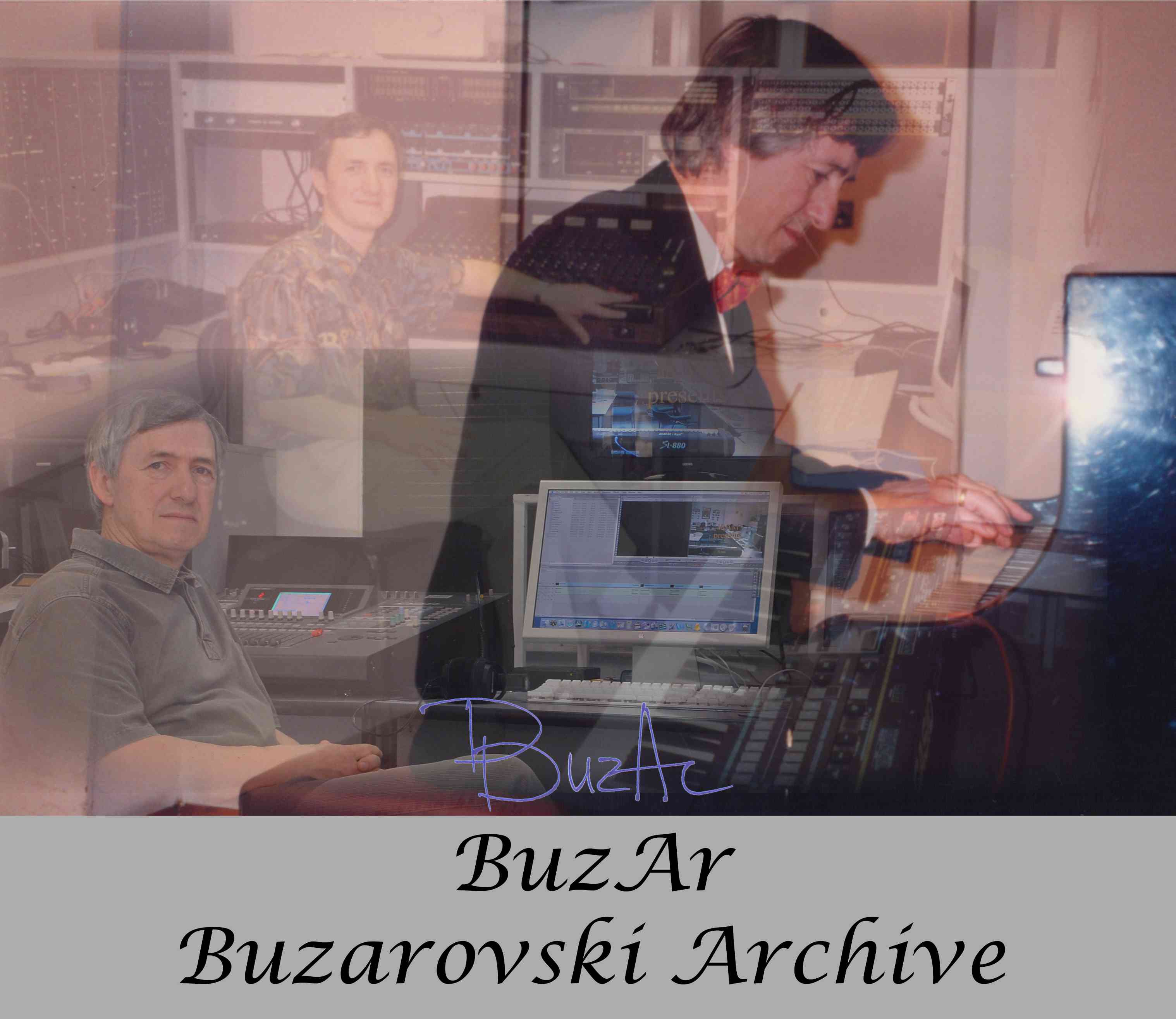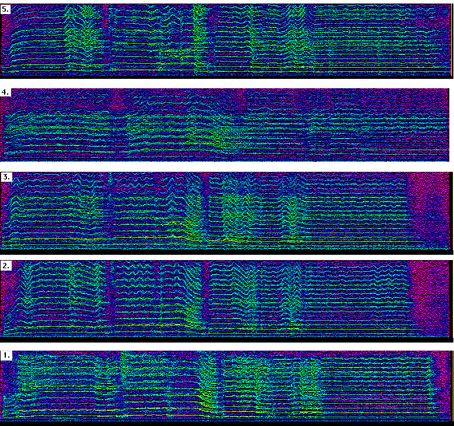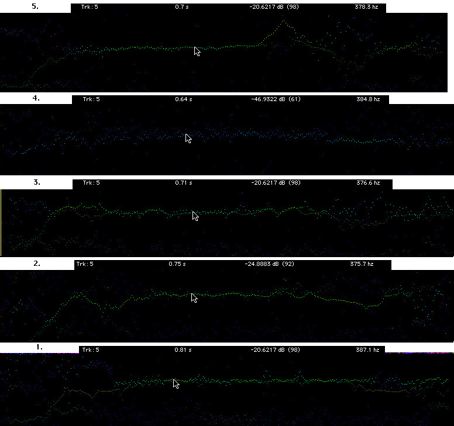| Dimitrije
Buzarovski Firfov Collection Revisited: The Oral Tradition after 30 Years* |
|
The IRAM digitisation of
the Firfov
Collection was the first and the largest
project for the systematic digitisation of the sound
cultural heritage in Macedonia until now (see BuzAr
Collections). The digitised material
created varieties of perspectives in the analysis
and the understanding of the processes of the
creation, reproduction and retention of the music
folklore tradition. During the formation of the
secondary data for the audio material, we faced
serious problems, since Firfov himself left very
little written material regarding the participants,
the time, the location and the conditions during the
recording. In order to collect and to
reconstruct the missing data, we started to search
for the singers and the other participants in the
recording of this collection. Among the first to be
approached were those whose names where known, or
identifiable and living in Skopje, i.e. two singers
from the female group Bapchorki – Leta
Bardjieva and Dosta Donevska. The Bapchorki group
alone was recorded with 64 songs in the Firfov
Collection. Leta Bardjieva was an
especially interesting informant for us. She was the
leading singer in the Bapchorki group with an
extremely rich repertoire. She was recorded
with 17 songs as a soloist the collection, and there
is a possibility that there are more recordings,
since these data are preliminary at the moment. We have defined several goals for
these re-visits: – to
reconstruct the events which contributed to the
recording and the creation of the Firfov
Collection; – to
find out more about the background of the singers
who participated in the recordings; –
to ask them to sing some of the songs (or
other) which they recorded three decades ago. We expected direct results in the
improvement of the secondary database and thus
better empirical material for comparison and
analysis for the tertiary database. In order to avoid discrimination
of the answers or the singing, we tried to establish
a very relaxed type of communication with the
informants, without giving any special suggestions
or interventions. We visited Leta Bardjieva and
Dosta Donevska in Donevski’s house in Skopje on
January 19th, 2002. The video recording which was
done with Sony miniDV camera and a stereo mike
includes cca 120 minutes conversation and singing.
We have edited a video documentary on Leta Bardjieva
and Dosta Dimovska with their descriptions of the
music folklore and its relations to the customs and
life in the village of Bapchor, the formation of the
vocal group Bapchorki and the recording conditions.
Leta Bardjieva and Dosta Donevska sang 6 songs for
us. Five of these songs are also recorded in the Firfov Collection.
Some of them are present in the collection in
several different versions and sang by different
singers . The tune of the song “Chupche od onaka” is
present in a version with different lyrics –
Kinisav da odam. Here is the list of the songs and
their versions: 1. Apsana me
klade (Leta Bardjieva and Dosta Donevska, 2002) Apsana me klade (Firfov
Collection K20-2, Bapchorki) 2. Chupche od onaka (Leta
Bardjieva and Dosta Donevska, 2002) Chupche od onaka (Firfov
Collection K15-1/2 Bapchorki) Kinisav da oda (Firfov Collection
K7-1/2 Leta Bardjieva) Kinisav da odam (Firfov
Collection K20-1 Kosturchanki) Kinisa da oda vo selo
D’nbeni (Firfov Collection K20-2/1
Kosturchanki) 3. Jordano mori zrno odbrano
(Leta Bardjieva and Dosta Donevska, 2002) Jordano mori zrno odbrano (Firfov
Collection K26-1 Bapchorki) 4. Katinka bola legnala (Leta
Bardjieva and Dosta Donevska, 2002) Katinka bola legnala (Firfov
Collection K26-2 Bapchorki) 5. Vecherajte ne chekajte (Leta
Bardjieva, 2002) Vecherajte mila mamo (Firfov
Collection K1-2 Leta Bardjieva) Vecherajte mila mamo (Firfov
Collection K7-1/2 Leta Bardjieva) Vecherajte mila mamo ne chekajte
(Firfov Collection K10-1/2 Kosturchanki) Vecherajte lele (Firfov
Collection K21-1 Lefterija Shankovska) This excellent and fascinating
material gives enormous opportunity for comparisons
and analysis both on a textual and contextual level.
This was part of our definition of the mission
during the digitisation of this collection. Having in mind the complexity of
the material, we decided to concentrate our research
only on two segments - the pitch and the duration
(tempo) of the songs. At the very beginning we decided
to determine the approximate pitch of each song and
its versions, based on the nota initialis (or more
precisely the first sustained tone, having in mind
that some of the songs start with glissando),
compared to A4
= 440Hz.
We approximated, or rounded, each nota initialis to
the closest pitch in our half step Western division,
except in the case of “Kinisa da oda vo selo
D’nbeni”, where there is a variation of the
beginning. In this case we calculated the tone which
is adequate to the nota initialis in the others
(following the melodic line). We also did the
comparison to the relative pitch of the newest
recording, i.e. the recordings we did with Leta
Bardjieva and Dosta Donevska in 2002. The following
results were obtained: 1. Apsana me
klade (Leta Bardjieva and Dosta Donevska) –
F-sharp Apsana me klade (K20-2,
Bapchorki) – G 2. Chupche od onaka (Leta
Bardjieva and Dosta Donevska) – C Chupche od onaka (K15-1/2
Bapchorki) – C Kinisav da oda (K7-1/2 Leta
Bardjieva) –
E-flat Kinisav da odam (K20-1
Kosturchanki) – A (below C) Kinisa da oda vo selo
D’nbeni (K20-2/1 Kosturchanki) –
A-flat (below C) 3. Jordano mori zrno odbrano
(Leta Bardjieva and Dosta Donevska) – C Jordano mori zrno odbrano (K26-1
Bapchorki) –
B (below C) 4. Katinka bola legnala (Leta
Bardjieva and Dosta Donevska) – A Katinka bolna legnala (K26-2
Bapchorki) – C
(above A) 5. All versions of
Vecherajte ne chekajte –
F-sharp At first glance, there was no
consistency in the treatment of pitch by the folk
singers except in the fifth example “Vecerajte ne
chekajte” where all five performances, carried out
at different times and by different singers, had the
same pitch. There is a half step difference in the
first and the third songs, and minor third
difference in the forth song. The second song, is a
special case because in the version “Chupce od
onaka” we have the same pitch, while the other
version “Kinisav da odam” is a minor third above in
Bardjieva’s performance, and minor/major third below
in the two recordings of the vocal group Bapchorki.
Having in mind that we rounded
the pitch to a half step, the examples with the half
step difference come closer in the 2nd and the 3rd
example, or higher than a half step in the 1st
example. When we used the term consistency
we did not mean only that there are differences in
the pitch, but also that there are differences in
the direction of the intervals (up or down in
comparison to the latest recording). We considered the fact that the
differences in the pitch could be a result of the
speed of the cassette deck which was used for
recording or playback. All recordings in the Firfov
Collection where made with the same Philips
machine, and we did the conversion using the same
Marantz machine. The fact that some of the songs are
higher and some lower is an argument against this
possibility. An additional argument is that
there are differences in the pitch in the variants
of the same song (number 3 and number 5) in the Firfov
Collection. Still we can not entirely
deny the possibility of creation of artificial
difference, or similarity in the pitch of the
different songs due to the different speed of the
recording and playback machines. This difference
could be applied only to the comparison between the
recordings we made from one side and those from the
Firfov
Collection on the other. The four versions of
the song “Vecherajte ne chekajte” from the Firfov
Collection are recorded and played back with
same machines, thus there is no possibility of
an artifact in the pitch difference. In the further course of our
research we decided to concentrate on the analysis
of the five versions of the song “Vecherajte ne
chekajte”. There was an additional reason to select
this song. During the recording Leta
Bardjieva started the song in another key, then
stopped and asked to stop the recording because she
was not satisfied with the pitch and she would like
to start from more “appropriate” key. She “tuned”
her voice and started the song with the identical
pitch from her recordings three decades ago. There
were no any tuning instruments in the room, or any
other audio means (such as radio, TV etc.) which
could have influenced her determination of the
pitch. Leta Bardjieva does not have any music
education, voice or other music training. In fact,
this was the main incentive for us to start the
special research of the pitch phenomenon.
In order to determine more
precisely the pitch of each of the five performances
of this song we approached them through the spectral
analysis using Capybara hardware and Kyma software,
from Symbolic sound corporation.
Figure
1. Spectral analysis of the five versions of
“Vecherajte...” song The spectral analysis was
particularly applicable as all performances are
vocal and monodic. Thus we avoided any additional
influences in the distribution of the spectral
envelopes which can be blurred by the use of
instruments or polyphony. Being interested only in the
determination of the pitch differences, we limited
the creation of the samples which will be used for
the spectral analysis only to the first phrase of
the song (the lyrics “Vecherajte lele”).We created
the spectral files with the help of the spectral
analysis tool. 44.1
kHz samples were used as basic and the spectral
analyzer length which controls the length of the
FFT, was positioned at 256 tracks (or sine waves,
covering the area up to the Nyquist frequency). Above we have presented the cuts
up to approximately 5 kHz (having in mind that
energy of the voice is concentrated mainly in these
regions) of the five variants of the Vecherajte
song. Number 1 is the newest version, 2
and 3 Leta Bardjieva’s versions from Firfov
Collection,
4 Kosturchanki’s version, and 5 Lefterija
Shankovska’s version. To determine the pitch of the
fundamental sine wave we zoomed in the region
of the nota initialis and created new windows.
For this presentation we used a
part of the spectrum analyzer window with centered
5th track. We inserted the pointer at the
approximate position of the average pitch of the
nota initialis (it is obvious that it can not be a
fixed frequency, and is more “a number of frequences
around the perceptive pitch”) and obtained the
following results: 1st – at
387.1 Hz 2nd – at
375.7 Hz 3rd – at
376.6 Hz 4th – at
384.8 Hz 5th – at
378.3 Hz For comparison the positions of
the closest notes are: F-sharp 4 = 370 Hz and G4 =
392 Hz. In general it means that all five
versions are somewhere between these two pitches.
Having in mind that most of the people
find it difficult to catch the difference even
between quarter steps, this pitch will be heard as
the same. In fact, most of the musicians listening
to the samples expressed their opinion that it was
the same pitch.
The first conclusion after the
analysis of these examples, and especially after
Leta’s attempt to locate the “correct” pitch, was
that folk singers have internal or innate tuning
instrument. The same pitch could not be mere
coincidence as it was reiterated by different
singers in different occasions, even after 30 years.
The other examples confirmed the same conclusion as
the majority of them are again either in the same or
very close pitch. Zivko Firfov transcribed this
song for the book “Sokol mi leta
visoko” (Gjorgji Donevski 1980) with nota
initialis G. There is a simple explanation for this
transcription –
writing in G, was easer for reading. As Leta Bardjieva stated during
the interview, she has never recorded this song. The
song became popular through the recording of the
rock group “Synthesis” under the name “Me fatile”.
When we compared the pitch of that version we found
out that the comparative first note of the song is
located between G-sharp 4 and A4. We
could assume that the pitch was determined due to
the folk instruments included in the performance.
The singers and the musicians from this ensemble
learned the song through the score from the book
“Sokol mi leta visoko”. Also, this group consists of
educated musicians. The question which followed our
analysis was – if
there is such a thing as “internal tuning
instrument” is this a textual or contextual
characteristic? We could assume that the folk
singers understand the pitch in a contextual manner.
Their search for the most appropriate pitch is a
search for the closest meaning they would like to
convey. As an argument pro this
distinction we should quote the example of the song
“Chupche od onaka”. Leta Bardjieva has recorded this
song separately with other lyrics (Kinisav da oda)
singing the same tune for a third interval higher.
Singing the tune in another key, especially much
higher, for a singer as Leta who has obviously a
very developed sense for the pitch, was equivalent
to singing another song, i.e. changing the context.
As far as the other element we
were interested in are concerned – the
duration (tempo), or the temporal dimension, we
cannot say that we could find any similarity, and
some of the songs might be very different
(much longer or shorter) in terms of the total
duration. In fact, the small differences which
appear at the phrase level are accumulated during
the performance. Even the three versions of Leta
Bardjieva’s performance of the song “Vecherajte” are
very different in their duration. One explanation
could be that the temporal dimension depends on lots
of other factors - the mood, environment, breathing
etc. If we compare these two
characteristics – pitch
and duration with their understanding in the
classical music genre; we will see a completely
opposite situation. Pitch is not a fixed category
(the same song can be transposed depending on the
voice, or the instruments performing it, for
instance soprano or alto, violin or cello), while
the tempi are precisely determined. The total
duration of the composition could not differ
substantially from performance to performance. If we
follow the globalization processes in
music which aim to unify and adjust the local music
systems, education, performance, training etc., to
the Western dodecachordon culture, can we say
that humankind is losing this fascinating feature,
i.e., the link between pitch
and context?
↑ Back to top |
| Home |
© Buzarovski, 2018
All rights reserved. Unauthorized duplication of any of the materials related to the files which are part of this web site is a violation of applicable laws. |


